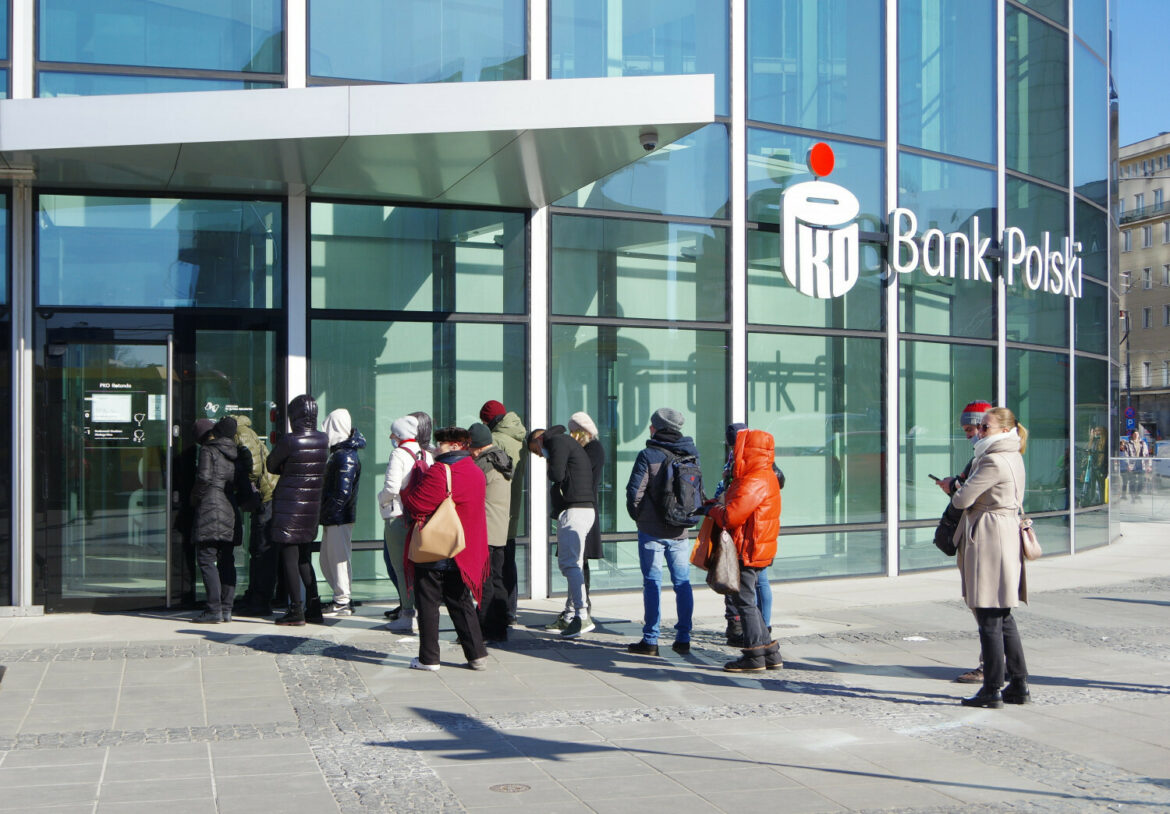Barbara Jaroszek, the director of the NBP Treasury and Issue Department explains that the cash that we buy from the citizens of Ukraine will be returned as electronic money by the local central bank. Until it is received, it will be a deposit of the NBU with the NBP.
Financial Observer: Queues of Ukrainian citizens can be seen in front of the branches of PKO BP SA that exchange hryvnias for zlotys. This is probably proof that the exchange program was needed?
Barbara Jaroszek: Indeed, the extremely unfavourable hryvnia exchange rate in exchange offices is a real problem that the Narodowy Bank Polski is solving in cooperation with the National Bank of Ukraine and PKO BP SA. The program began on March 25, and today, on April 5, on the eighth operating day, nearly 28 thousand Ukrainian citizens have already exchanged over 209 million hryvnias at the rate of PLN 0.14 per hryvnia.
People who fled the war, sometimes with less than the equivalent of PLN 1,400 had to sell their hryvnia in exchange offices offering them 40% less than the official exchange rate, e.g. PLN 0.10 per hryvnia?
We know that some of them did not buy the hryvnia at all, some with limits, and some gave the rate even worse than the 0.10 hryvnia, or 0.01 zloty for the hryvnia. So, it was an urgent topic to be resolved for the Narodowy Bank Polski and the National Bank of Ukraine.
What was done?
We realized that the hryvnia could not be exchanged by the NBP regional branches because we are not a retail bank and we do not have an extensive structure. Therefore, based on our relations as a supplier of Polish currency to the banks, we decided to invite PKO Bank Polski SA to cooperate.
Let us remind you who can benefit from this exchange.
The citizens of Ukraine who are 18 years of age or older, who have a passport or ID card issued after 2016 and are entitled to a one-time exchange of 10,000 PLN, are eligible for exchange of hryvnias to zlotys. We have signed the contract with the National Bank of Ukraine for three months, and the purchase limit is a total of UAH 10 billion.
That is, with the limit of 10 thousand hryvnias per person, we are talking about up to 1 million adult citizens of Ukraine who can benefit from the exchange?
That was the logic of setting the limit. We assumed that over 2 million refugees would probably come to Poland. We also assumed that about a million of them would be adults entitled to exchange and those who would also have hryvnia with them.
Many misunderstandings have arisen over this issue. I read comments on the Internet that the NBP is buying the hryvnia for charity, at a loss and weakening the zloty.
This is not humanitarian aid. There is a hryvnia purchase agreement between the Narodowy Bank Polski and the National Bank of Ukraine. It is an ordinary purchase and resale transaction of the Ukrainian currency, except that under these conditions before the hryvnia will be received by the National Bank of Ukraine, which will pay us for it, they must first come through the branches of PKO BP SA and the treasuries of the Narodowy Bank Polski.
Are other central banks also buying hryvnia?
Every day we are talking to other central banks about our program, which is currently the only hryvnia buyback program in the world. I hope that the banks of our region, the Eurosystem banks and the Swiss National Bank will benefit from the paths we have paved.
-Interview by Marek Pielach, a journalist from the Financial Observer, specializing in macroeconomics and public finance order





